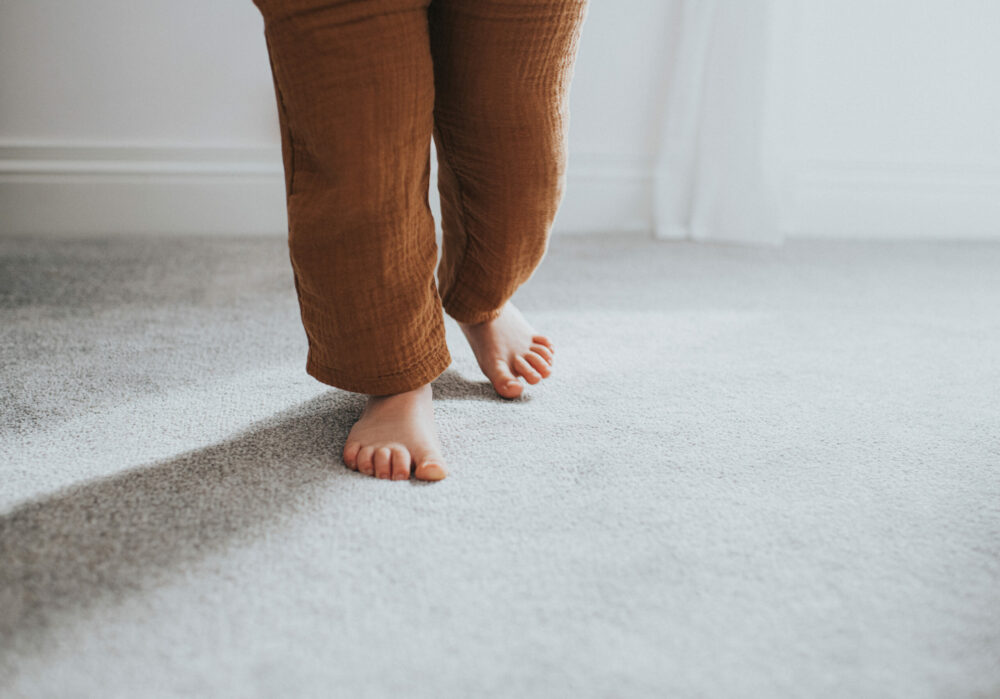There are many factors to consider when choosing a floor covering. Natural or synthetic? Easy-to-clean or noise-cancelling? Hard-wearing or plush? Michelle Laming shares her interior know-how.
Carpet feels
Most modern carpet is created by threading closely spaced loops of fibre through large sheets of backing material. Natural-fibre carpets are made mostly from the wool of sheep or alpaca. Synthetic-fibre carpets are made from materials such as solution-dyed nylon or polyester. Lately, there has been a huge push out of Italy to use recycled products, such as fishing nets.
In terms of look there are three main types of carpet, depending on whether the loops are cut or not during manufacturing:
- Cut pile plush has an upright pile that creates a lush appearance. Because it is moveable, it feels like velvet underfoot and is fabulous to lie on.
- Cut pile twist can be a semi or hard twist, where the fibre is assisted with a twist to show less visual movement and give a more structured look.
- Loop pile has had an image boost of late, primarily within modern homes where less is best.
Carpet is manufactured in huge rolls, 3.66m or 4m wide, and sold in a linear format. The location of the joins dictates the amount of carpet used.
Top tips
- All cut pile carpets will track (show visual movement) over time, but higher ounces represent better quality and will be harder wearing. This is especially important for stairs.
- Loop pile carpet used to track over time too, but the new Bremworth range – where the wool has been felted – has been a game changer in this respect.
- Different-sized loops are designed to complement each other within different areas of the home.
- Manufacturers can make custom rugs, from rectangular to round ones, which is a breath of fresh air for those of us who like to specify.

Laminated timber
Timber floors come in a huge variety of styles. One option is engineered wood flooring; it’s multi-layered in construction, with a laminate of the timber placed on top of an underlying substance. This is either glued down to the existing sub-floor or clicked together (and installed using the floating method, without glue).
A lot of laminated timber is made out of European Oak, which grows quicker (so the timber is better priced) but is a softer type of grain and so needs more maintenance. French Oak is slower to grow, with a much tighter grain and better durability, hence it’s more expensive. With the colouring and finishing of the French Oak surface done in-house, this finish makes it much easier to maintain. The best solid, recycled French Oak comes out of old warehouses or châteaus in France and is available here in New Zealand.
Top tip: Timber floors are noisier than some coverings, and can be hard wearing but not always water resistant. For this reason, it’s important to check if engineered timber can go into wet areas.

Tile quality
Tiles are often used for flooring as they’re the hardest wearing option, but they can also be the noisiest. A large proportion of tiles are laser-treated with images of natural stone.
Quality tends to depend on where they originate – the tile price will often be an indicator. Generally, tiles with the best lifespan come out of Italy and Europe, whereas the less expensive have been known to have a shorter lifespan. This is something to be aware of, especially in high-traffic areas.
Cork tiles are making a comeback; they are warm, soft and great insulators, with an array of pre-finished styles and colours available. They are glued down, but they will need to be sealed after being laid if they’re in their natural condition.
Top tip: In temperate climates, underfloor heating is highly recommended.

Surprising concrete
Another style of hard flooring that’s being used in the new housing market is concrete. It can be coloured or left natural, with you can include an additive to assist with less cracking. It’s surprisingly soft to look at and very easy to live with. If you have great heating sources (such as a heat pump and log burner) and good orientation of the house, then no underfloor heating is required.
Top tips
- This flooring is so easy to clean with a micro mop – it’s incredible!
- This material is widely used in Australia (including milder climates, such as Melbourne) for its smooth texture and velvety look.
